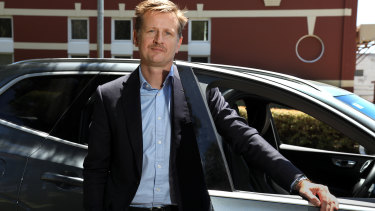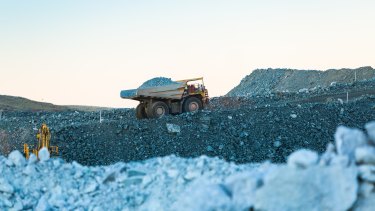Lithium miner back in the driving seat on electric vehicle rebound
By Nick Toscano
For Australia’s miners of lithium, one of the critical metals to make electric batteries, last year started out like the one before it: with the same weakness in demand and pricing that has been forcing operators into survival mode.
The markets for battery ingredients lithium and cobalt, which soared from 2016-18, went from boom to bust after a rush of new projects tipped the industry into oversupply, and reductions in Chinese subsidy programs put a pause on the electric vehicle revolution.

The price of hard-rock lithium concentrate known as spodumene had crashed by nearly half already and the COVID-19 pandemic threatened to drive car sales even lower.
But as it turned out, 2020 was a “tale of two halves”, says Ken Brinsden, chief executive of Pilbara Minerals, one of Australia’s largest lithium miners.
In their post-pandemic recovery push, world governments started unleashing “green” stimulus programs supporting transport electrification. Demand increased in China with electric vehicle sales and uptake of lithium-ion batteries to store renewable energy. Britain said it would ban new petrol and diesel car sales from 2030. Europe rose to become the world’s largest electric vehicle market. And new US President Joe Biden laid out plans to boost the sector with a roll-out of 500,000 electric vehicle charging stations and vowed he would make all federal fleets fully electric.
“Towards the end of the year, this started to be reflected in improvements in pricing outcomes,” Brinsden says.
UBS is projecting electric vehicles to comprise 40 per cent of new vehicle sales by 2030, fuelling an increase in lithium demand.
“A really significant turnaround… albeit coming off a very low base. Pricing is not fantastic but it is heading in the right direction.”
Prices for spodumene delivered to China were $US392 a tonne between September and November, marking a heavy 25 per cent year-on-year decline, but now appear to be rebounding.
Pilbara Minerals exported a record 70,609 dry metric tonnes of spodumene concentrate from WA’s Pilgangoora mine, beating its target, and told investors that a material uplift in lithium chemicals pricing in China had led the Platts battery-grade carbonate price to rise 35 per cent after hitting its bottom in September.
“Buying has become a bit more urgent,” Brinsden says, “and we think that’s ultimately going to reflect well in pricing.”

Renewed optimism about the electric vehicle revolution and signs of strengthening sales in China and Europe are not going unnoticed by investors. The share prices of Australian lithium producers have been soaring since October. Pilbara Minerals’ stock has more than tripled from 30¢ a share to $1.15.
Australia is the world’s top exporter of lithium, accounting for 55 per cent of supply, which it ships mainly to China for processing. The market downturn since 2018 years has pushed some Western Australian operators to breaking point. Alita Resources collapsed into administration in 2019 after opening its Bald Hill mine just 18 months earlier. Another miner, Altura, went into administration in 2020 and mothballed its operations at Pilgangoora.
Pilbara Minerals, whose assets neighbour Altura’s, struck a deal to buy Altura’s lithium operations for $US175 million ($224 million), which was finalised last week.
Brinsden says the deal gives Pilbara minerals ownership of the largest independent hard-rock lithium complex in the world, and a larger, more resilient and flexible operation with available offtake, “which is an important strategic advantage at a time when a turnaround in the lithium market appears to be upon us”.
“It’s been tough period,” Brinsden says, “but I feel like we’ve weathered the storm pretty well.”
Analysts are expecting 2021 price rises for lithium products including spodumene, carbonate and hydroxide of 10 per cent on average. UBS is projecting electric vehicles to comprise 40 per cent of new vehicle sales by 2030, fuelling an increase in lithium demand…
This article is from the Sydney Morning Herald, you can read the full article here:
